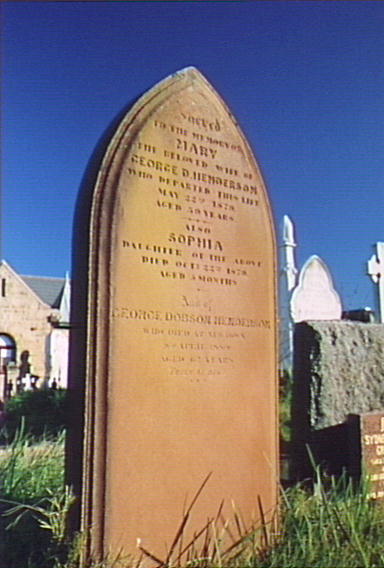The History of Headstones in Sydney: A Journey Through Time and Tradition
Sydney’s cemeteries are more than resting places — they are open-air museums of history, craftsmanship, and evolving cultural values. Each headstone tells a story, not just of the person it commemorates, but of the times in which it was created. From the colonial sandstone markers of the 1800s to today’s polished granites and laser-etched tributes, the journey of Sydney’s headstones mirrors the city’s own growth and transformation.
Early Colonial Era (1788–1850s): Sandstone and Simplicity
In Sydney’s early colonial period, headstones were hand-carved from local sandstone — the same golden stone that built much of the city’s architecture. These memorials were modest, often inscribed with simple Christian symbols such as crosses, cherubs, and the occasional verse. Cemeteries like the Old Sydney Burial Ground (near present-day Town Hall) and St John’s Cemetery, Parramatta, hold some of the oldest surviving examples. Despite their beauty, many early headstones have weathered significantly due to Sydney’s coastal climate and sandstone’s natural softness.

Victorian Era (1850s–1900s): Symbolism and Ornamentation
By the mid-19th century, the Victorian influence reshaped how Sydneysiders remembered their loved ones. The Industrial Revolution made new materials and tools available, leading to more intricate designs. Marble became the stone of choice, imported from Italy and later sourced from regional quarries. Headstones of this era featured elaborate carvings — angels, urns, ivy, and draped curtains symbolising eternal life and mourning. The establishment of Rookwood Cemetery in 1867 (today the largest necropolis in the Southern Hemisphere) marked a turning point, with entire sections devoted to different faiths and communities. Families began commissioning larger monuments and family plots, reflecting both social status and devotion.
Early 20th Century: Granite, Elegance, and Accessibility
By the early 1900s, granite began to replace marble as the preferred material. Its durability and striking polish made it ideal for Sydney’s changing climate and modern tastes. Monumental masons started blending artistic tradition with precision craftsmanship — names, epitaphs, and motifs were engraved deeper, lasting far longer than their sandstone predecessors. This era also saw the rise of ethnic and cultural diversity in Sydney’s cemeteries. Migrant communities — Greek, Italian, Lebanese, Chinese and others — brought their own symbols and languages to headstone design, enriching the city’s memorial landscape.
Post-War to Late 20th Century: Modernisation and Regulation
Following World War II, Sydney’s growing suburbs led to the establishment of new cemeteries such as Woronora, Macquarie Park, and Eastern Suburbs Memorial Park. Designs became more standardised as cemetery authorities introduced regulations on headstone dimensions, colours, and materials. Polished black, grey, and red granites dominated this period, with gold leaf inscriptions becoming popular for their elegance and longevity. Monumental masons began to embrace machinery and sandblasting techniques, combining artistry with efficiency.
The Present Day: Personalisation and Innovation
Today, headstones in Sydney reflect both tradition and individuality. Families can choose from a vast array of granites, finishes, and inscription styles — from traditional gold leaf and hand-carved motifs to modern laser etching and ceramic photo inlays. Cemeteries have also evolved to accommodate eco-friendly memorials and digital elements such as QR codes linking to online tributes. Despite these innovations, the essence remains the same: to honour life with beauty, dignity, and permanence.
A Legacy in Stone
The evolution of Sydney’s headstones is a story of craftsmanship, faith, and love carried through generations. Each cemetery stands as a silent record of the city’s cultural mosaic — from colonial settlers and war heroes to migrant families and modern memorials. At European Monuments, we continue this legacy, combining time-honoured techniques with modern innovation to ensure every inscription and headstone becomes a lasting tribute to those remembered.